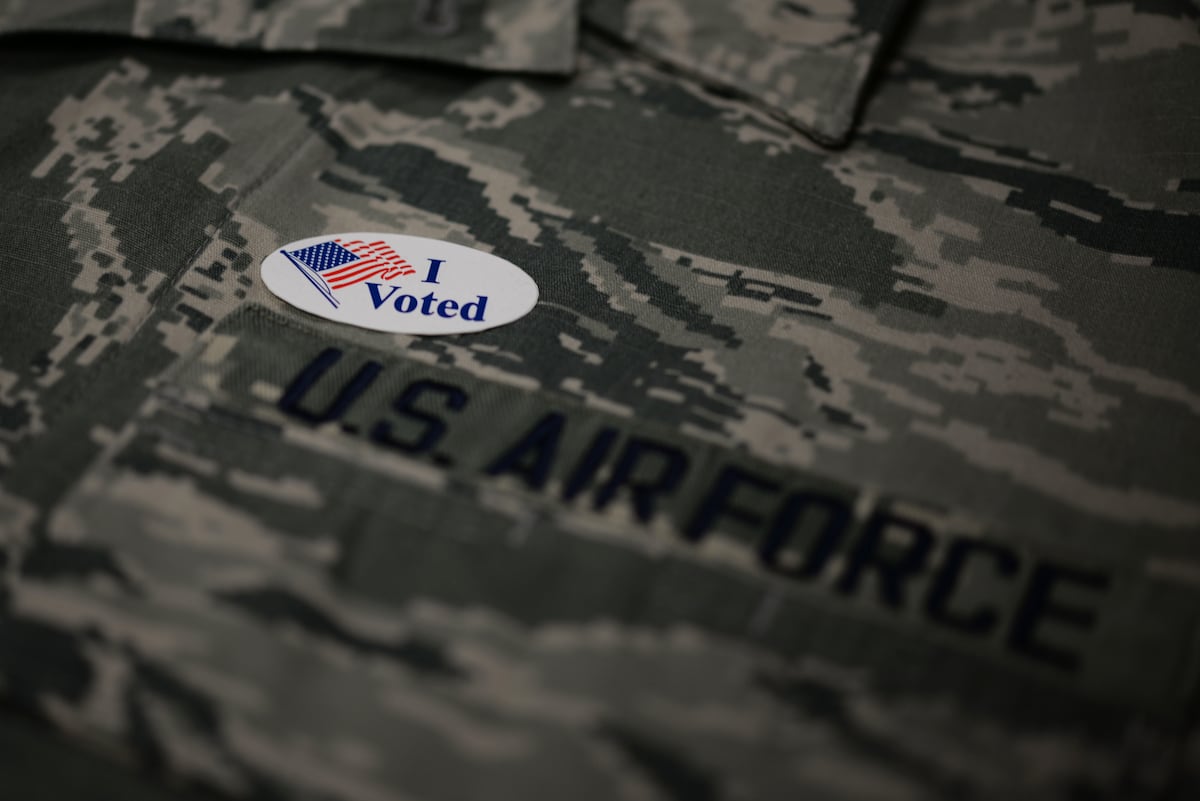With less than a week before the Nov. 5 election, service members and their family members who are voting by absentee ballot should cast their ballot now. That includes those living overseas who can use a free expedited mail service.
Absentee voting rules vary by state, with some states requiring voted absentee ballots to be returned by Election Day, while 19 states permit the counting of postmarked ballots after Election Day, according to The Associated Press.
Meanwhile, some states, like Nevada, allow absentee voters to do everything electronically. For instance, Nevada, which is a swing state, allows military absentee voters to use email, fax and the state’s online absentee voting system to register to vote, request their ballot and return their voted ballot all on Nov. 5. In Nevada, mailed voted ballots must be postmarked by Nov. 5, and received by the fourth day after the election.
Still, for voted ballot return, postal mail remains the only universally accepted method and the most common. States choose whether to allow Uniformed and Overseas Citizens Absentee Voting Act, or UOCAVA, voters to return completed ballots electronically. Fax and email are the most common electronic options for ballot return. That federal law protects the right to vote for U.S. citizens living overseas and military members and their families living away from their voting jurisdiction.
If you’ve received your requested absentee ballot from your local election officials, mail it now or send it electronically if your state allows it.
Those who haven’t received their requested ballot from their local election jurisdiction should download the Federal Write-In Absentee Ballot, or FWAB, immediately from the Federal Voting Assistance Program site at FVAP.gov/FWAB, fill it out and mail it. It acts as a backup ballot; but if your official state ballot arrives after you mail the FWAB, fill that out and mail it, too. Your election officials will count only one ballot.
Some state election officials are beginning to report absentee ballots as Election Day nears. In Georgia, for example, state officials’ numbers indicate that more than 13,000 absentee ballots they’ve sent to military absentee voters and U.S. citizens living overseas have yet to be returned, state officials told Military Times.
About three-fourths of the 1.4 million active duty service members are eligible to vote by absentee ballot because they are stationed away from their voting residence, according to FVAP. In addition, their family members can vote by absentee ballot.
Your voting residence is within your state of legal residence or domicile. For service members, it is typically the same address listed on your Leave and Earnings Statement.
Over the years, FVAP, postal officials, lawmakers and local and state election officials have worked to shore up the processes for getting military and overseas citizen absentee ballots to local election officials in time to be counted.
One tool for voting military members and their family members living overseas is the free expedited mail service, using the Label 11-DOD at their military post office. This service also allows the voter to track the ballot to its delivery at their local election jurisdiction.
Information was not available from the U.S. Postal Service about how many ballots have been sent back to states using the Label 11-DOD, which is available this year from Sept. 1 through Nov. 30.
Information was unavailable from FVAP about the number of downloads of the FWAB backup ballots to date, or the number of Federal Post Card Application requests used for voter registration and ballot requests. A month ago, officials said on average, the numbers for those downloads were about 50% below what they were in late September 2020 during the last presidential election.
Likewise, the nonpartisan organization Overseas Vote, part of the U.S. Vote Foundation, also isn’t seeing an increase in these downloads, according to Susan Dzieduszycka-Suinat, president and CEO.
Each state or territory sets its own deadlines for voter registration and ballot return. To find information on your state’s deadlines and requirements, visit fvap.gov/military-voter. You can also find out whether your voted ballot has been received by your state, by clicking the “Check the status of your voted ballot” on that page. You can also visit your state’s secretary of state website for specifics.
Voting assistance offices at military installations also provide specific information about the voting process. The services also provide voting assistance officers at the unit level; if you can’t find assistance locally, you can contact your service branch voting action officer.
All states must offer UOCAVA voters an option for receiving their blank ballot electronically, while each state can determine the delivery method via email, fax or online portal.
States also choose the methods UOCAVA voters can use to submit their applications to register and request their ballot. Most offer some form of electronic voter registration and ballot request submission method, though a few states require postal mail.
Karen has covered military families, quality of life and consumer issues for Military Times for more than 30 years, and is co-author of a chapter on media coverage of military families in the book “A Battle Plan for Supporting Military Families.” She previously worked for newspapers in Guam, Norfolk, Jacksonville, Fla., and Athens, Ga.
Read the full article here
